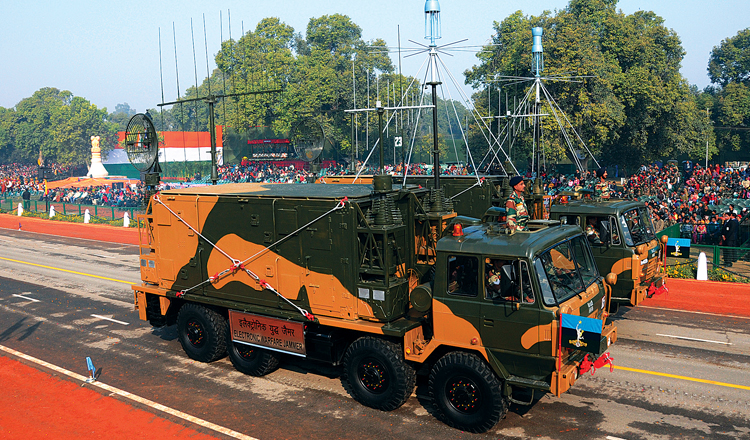SOURCE: AFI

In a stunning display of technological prowess, the Indian Air Force (IAF) successfully bypassed and jammed Pakistan’s Chinese-supplied air defence systems, completing a critical mission in just 23 minutes. The operation, confirmed by the Indian Ministry of Defence (MoD), underscores India’s growing technological edge in modern warfare and its ability to neutralize sophisticated enemy defenses with precision and speed.
According to the MoD, the IAF executed the mission with remarkable efficiency, penetrating Pakistan’s air defence network and achieving its objectives without detection or interception. The operation involved advanced electronic warfare (EW) techniques, enabling the IAF to jam and suppress Pakistan’s radar and missile systems, rendering them ineffective for the duration of the mission.
The Chinese-supplied air defence systems, believed to include variants of the HQ-9 or HQ-16 missile systems, are designed to detect and engage aircraft at long ranges. However, the IAF’s use of cutting-edge electronic countermeasures (ECM) and stealth tactics completely disrupted these systems, allowing Indian aircraft to operate undetected within contested airspace. The entire mission, from ingress to egress, was completed in a mere 23 minutes, highlighting the IAF’s operational tempo and technological superiority.
Technological Edge on Display
The MoD’s statement emphasizes the IAF’s advanced capabilities in electronic warfare and network-centric operations. Key elements that contributed to the mission’s success include:
- Electronic Countermeasures (ECM): The IAF deployed sophisticated jamming systems to disrupt Pakistan’s radar and communication networks, effectively blinding their air defence systems.
- Stealth and Precision: The use of low-observable aircraft and precision-guided munitions ensured minimal radar signatures and accurate target engagement.
- Real-Time Intelligence: Integration of satellite imagery, signals intelligence (SIGINT), and airborne early warning systems provided the IAF with a comprehensive situational awareness, enabling rapid decision-making.
- Indigenous Technology: The operation likely leveraged India’s homegrown EW systems, such as those integrated into the Sukhoi Su-30 MKI or the indigenous Tejas aircraft, showcasing the country’s advancements in defense technology.
The MoD did not disclose specific details about the aircraft or systems used, citing operational security. However, the mission’s success highlights the IAF’s ability to dominate the electromagnetic spectrum, a critical domain in modern warfare.
This operation sends a strong message to adversaries about India’s military capabilities and its ability to neutralize advanced air defence systems. Pakistan’s reliance on Chinese-supplied equipment, which has been marketed as cutting-edge, has been called into question by this incident. The HQ-9 and similar systems are designed to counter aircraft, drones, and missiles, but their failure to detect or engage the IAF exposes potential vulnerabilities in their design or integration.
NOTE: AFI is a proud outsourced content creator partner of IDRW.ORG. All content created by AFI is the sole property of AFI and is protected by copyright. AFI takes copyright infringement seriously and will pursue all legal options available to protect its content.